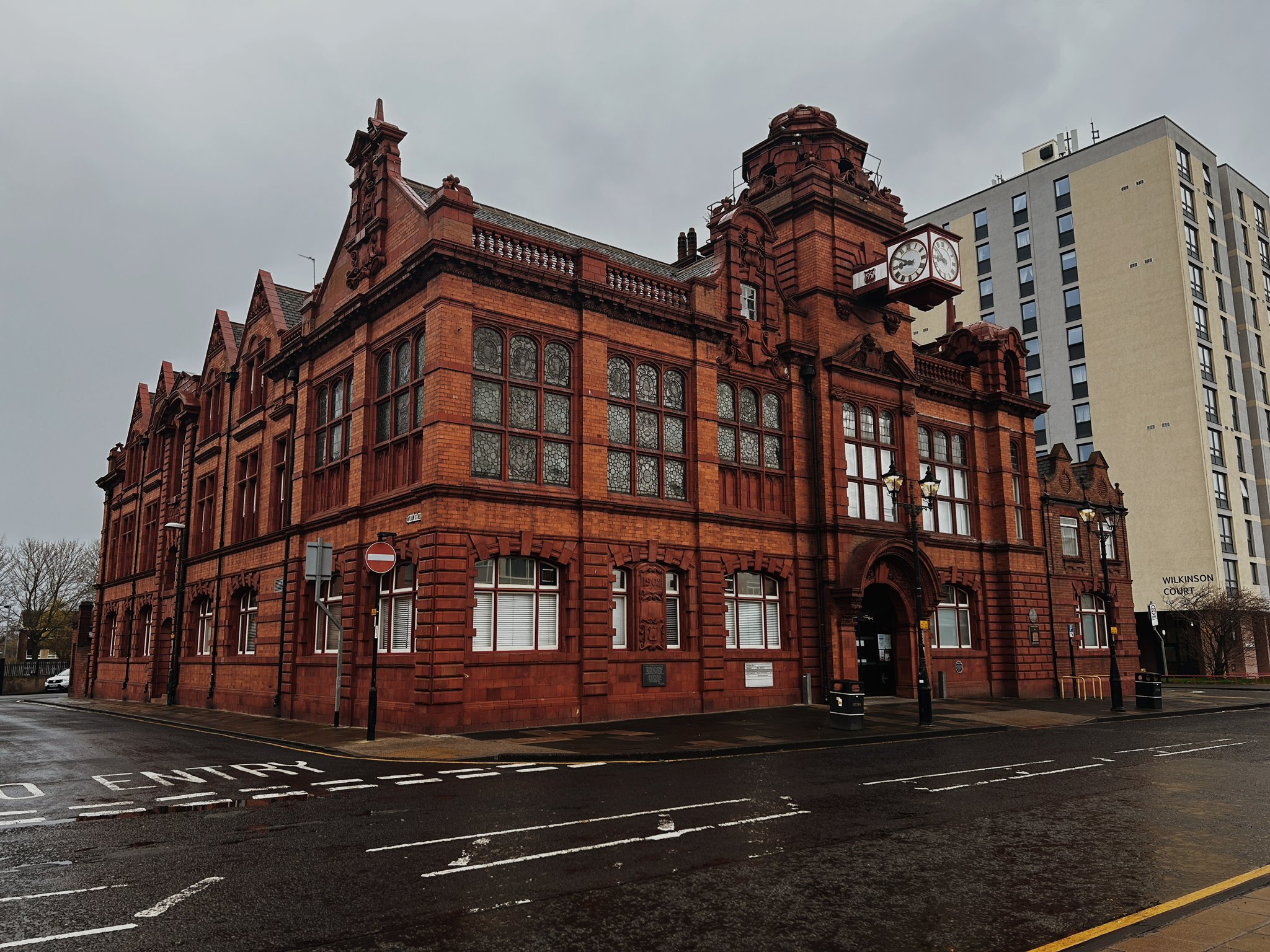
Jarrow Town Hall
Jarrow, South Tyneside
Last Updated:
25 Jan 2024
Jarrow, South Tyneside
54.981484403535454, -1.4899434740015012
Site Type:
Civic Building, Town Hall
Origin:
Status:
Extant
Designer (if known):
Fred Rennoldson
Grade II listed

Jarrow Town Hall on Ellison Street is one of the countless examples of municipal ambition on Tyneside. This terracotta and red brick town hall commenced construction in 1902 when Jane Palmer laid the foundation stone. Jane was the wife of Sir Charles - coke merchant, shipbuilder, politician and one of the great fathers of Jarrow.
The building was needed as Jarrow grew exponentially in the past half century - first mining, then shipbuilding expanded the boundaries of the town as more workmen and their families settled here. It was established as a municipal borough in 1875. The council's first establishment could be found on thje corner of Grange Road and Wylam Street, referred to the Corporation Chambers.
Altogether, construction cost £12,000, which is actually around £1 million in todays money. It was designed by a local architect Fred Rennoldson, who also designed Wright's biscuit factory at Tyne Dock.
The Town Hall is also known for being the start of the Jarrow March, which was supported by the local council where the community marched to London in protest of their treatment over the closure of Palmer's Shipyard. Poverty and depravation was rife in Tyneside generally, so similar to the demise of the collieries a few decades later, the community felt action needed to be taken on their impact of their standard of living. A banner was retained and can be found in the Town Hall.
The building is still retained by South Tyneside Council.
Listing Description


The two maps above illustrate the immediate area around the town hall between the 1890s and the 1910s. The first Ordnance Survey map shows Grange Road before construction of the civic hall. This ios the area the local authority operated from the Corporation Chambers which stood on the site. Jarrow was an incredibly dense town filled with terraces which accommodated the folk working on the river and the nearby pits. It is clear why a larger civic hall was needed.
By 1917 the boundaries had expanded further, blossoming into nearby Hebburn which was also expanding, and Tyne Dock. The new Town Hall can be seen on the corner of Grange Road and Wylam Street, surrounded by other such ameneties as a school, hotel, the general post office and various places of worship.

By the 1940s terraces were starting to be cleared - partly due to wartime bombings. What's now the Viking Centre was still predominantly housing, though over the next few decades the area was cleared and redeveloped.

Photograph from 2023 of the town hall, with the clock which was installed in 1951. Three tears later Queen Elizabeth and the Duke of Edinburgh visited the building.

Postcard of the town hall in its earlier years, without the clock.

Jarrown Town Hall in 1937, showing the Alnwick Castle Hotel on its eastern side. There was at least 4 other public houses enveloping the town hall too.